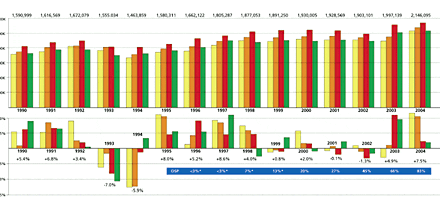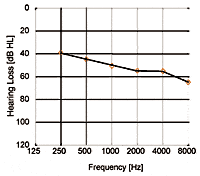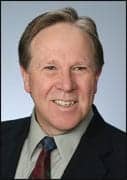
Hearing conservation may be a new concept to some consumers, but the companies in the hearing health care industry that manufacture and distribute such products tell a different story: It’s nothing new to them.
While the recent increased use of personal listening devices—and their potential to create noise-induced hearing loss when cranked up to full volume—has brought hearing conservation to the forefront of the public’s attention, these companies have offered various hearing conservation products for years.
The industry experts consulted for this article say there is more that hearing health care professionals can and must do to stress the importance of hearing conservation to their patients—just offering such products is a step that some professionals still need to take. Unlike the stigma that often remains with wearing hearing aids, these experts agree that any stigma attached to wearing hearing protection does not seem to be much of an issue anymore, and that the public, in general, is more open to wearing hearing protection.
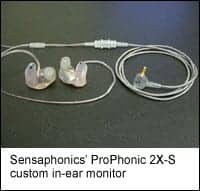
|

|
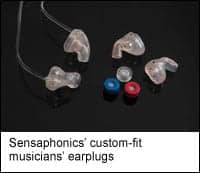
|
Given the opportunity, Michael Santucci, MS, founder of Sensaphonics Hearing Conservation, Chicago, says people will choose to protect their hearing. “We just need to make it easier for them, which means education and awareness, and, of course, the right products,” he says.
Richard Anesko, MS, staff audiologist at Westone® Laboratories Inc, Colorado Springs, Colo, says that in the music industry, the trend seems to lean toward hearing protection devices as “cool” and “hip” items to wear. Professionals are even adding bright colors and custom artwork to their devices.
As for the general population, Anesko says Baby Boomers are leading the way toward hearing protection. “This population is characterized by taking responsibility for their own situations, hearing health care included, and as a group, they’re quick to accept technology—as long as they see benefit,” he says. “Many have already damaged their hearing from [listening to] loud music and other causes and realize the implications of further hearing damage. As such, they seem to be more open toward hearing protection products. This trend may be filtering down to other age groups, especially young people.”
Garry Gordon, CEO of EAR Inc, Boulder, Colo, says hearing loss is at an all-time high and that it has only helped empower consumers to take corrective action and start focusing on hearing protection. However, he says, with the boom in the use of personal listening devices, corrective action needs to be taken to make such devices safer to listen to. “The devices have nothing on them that would prevent the consumer from listening to the sound too loud,” he says.
Music to the Ears
One of the most common markets hearing conservation products have infiltrated is the music industry—professional and consumer. Many musicians are being fitted with products such as monitor devices.
“In-ear musicians’ monitors essentially allow a performer to monitor their sound mix; that is, hear their own voice, instrument, or really whatever ‘mix’ they desire through their sound mixing board,” Anesko says.
“Without monitors, an on-stage performer typically would use a floor wedge—a loudspeaker pointed back up on stage toward himself, set with a higher volume level than already would have been present on stage during the performance,” he says. “This type of setup often would produce dangerously high sound levels, leading to hearing loss. In-ear musicians’ monitors eliminate the need for floor wedges, thus reducing the on-stage sound levels. In addition, they provide greater than 20 dB of ‘acoustic separation’ (hearing protection) from the sound environment. We have models available with one, two, or three drivers, meeting the performer’s needs based on desired sound quality and budget.”
For musicians and sound engineers, Sensaphonics offers custom in-ear monitor devices, the ProPhonic 2X-S earphones and the 3D Active Ambient IEM system. For those who do not use personal monitor systems, the company offers the ER Series flat response earplugs, with a choice of three levels of attenuation filters. “All these products are finding a niche with music lovers as well, including both concert audiences and hi-fi enthusiasts,” Santucci says.
Anesko says that over the years, Westone has fitted thousands of professional musicians with the company’s Elite Series™ (ES) custom in-ear musicians’ monitors. The ES products are full-shell, in-the-ear instruments that somewhat resemble hearing aids. “They are equipped with high-fidelity drivers, delivering excellent sound quality to the user’s ears, while blocking out dangerously high sound levels,” Anesko says.

For those in the music industry who prefer passive hearing protection, Westone offers a flat response custom earpiece, the Westone style ES49, an in-the-canal earpiece using an Etymotic Research™ flat response filter, providing either 9, 15, or 25 dB of hearing protection, depending on which filter set is selected. Made of either a soft vinyl or silicone material, the ES49s provide a way for musicians or concertgoers to protect their hearing while preserving sound quality.
For those not wanting custom ear protectors, Westone also offers universal fit in-ear musicians’ monitors, the UM1 and UM2, which are based on the same high-fidelity electronics as the ES series, but instead use generic Comply™ foam eartips. “They provide greater than 20 dB of acoustic separation, and are very popular among audiophiles and up-and-coming bands, and in situations where musicians may share use of the monitors,” Anesko says.
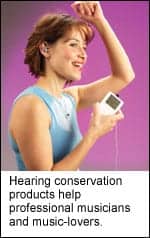
|

|
Custom-made Products
Customization can make all the difference in an effective product, Gordon says. Since a customized product is made for a particular individual, he says it will most likely be more comfortable and easy to use than an off-the-shelf product.
“There is an advantage for a lot of consumers that if they can get products customized, they usually appreciate them a lot better because they fit and perform well, provided that they are made properly, installed properly, and made from materials that are durable, don’t shrink, and have the proper properties to be an ear protector or ear mold,” Gordon says. Those properties should include features such as a seal coater to address porosity, and hydrophobic materials to repel moisture and remain hygienic, he says.
EAR Inc’s custom electronic earplug series includes the EAR Hi-Fidelity Series, the company’s line of high-quality analog circuitry, and the EAR Digital Series, which uses digital technology. The EAR Digital Series earplugs provide users with the ability to hear things with a “natural” sound quality while limiting distortions and background distractions often found within analog units. The devices can sample sound 20,000 times per second and can be programmed to reduce unwanted background sounds. EAR Inc offers a high/low, indoor/outdoor unit with two memories.
Niche Markets
The music industry is not the only field where hearing conservation is a concern. Industry professionals have expanded to varying degrees into other markets, such as motor sports, racing, aeronautics, hunting, shooting, law enforcement, communications, and the military.
“We’re not allowed to discuss our NASA products except to say we have two products that have been on 28 space shuttle and 10 space station missions,” Santucci says. “For Indy and CART drivers, we worked with Delphi Engineering to incorporate accelerometers into their communication earpieces, allowing them to record acceleration and g-forces on the drivers’ heads; plus, of course, the 37 dB of isolation from road noise. For airplane pilots, we created a custom-fit headset attachment with our partner, LightSpeed Aviation. In the communication area, we have both a one-way isolating custom earpiece designed for maximum speech intelligibility and a two-way piece with noise-canceling microphone for environments like the commodities trading floor, backstage security, and broadcasting.”
EAR Inc’s Gordon is credited with coining the term “recreational audiology” for his efforts to bring the issue of hearing protection and those products to an often untapped recreational market. For those markets, EAR Inc offers electronic, nonelectronic, filtered, and foam earplugs, as well as ear muffs. The company developed the EAR MiniCanal™ electronic earplug series as a line of small, discreet earplugs that fit comfortably into the ear with the use of various-sized, patent wax-guard tips. The product allows a user to share the units with another person by simply replacing the wax-guard tips—a helpful feature for such markets as law enforcement, instructors, military personnel, and shooting enthusiasts who can assign the units to other people without issues of fitting.
EAR Inc also offers Insta-Mold silicone earplugs, which are customized to fit a user’s ears, providing a “tissue-to-tissue” fit to replicate every crevice and contour of the ear, as well as heat-curable earmolds known as Chameleon Ears. Acoustic filters can be added to those molds to lower their overall NRR rating, but still retain harmful sounds to permissible levels.

|

|
Gordon says his company tries to attend as many tradeshows in different markets and address hearing conservation to as many groups as possible.
Anesko says Westone is manufacturing products, such as a full-shell earpiece for personal listening devices, that are starting to catch on in niche markets. “To provide hearing protection similar to a full-shell earplug, we expect better than 20 dB of acoustic separation, or attenuation, from the outside environment,” he says. “This reduction in ambient noise should allow the listener to enjoy his music at a reduced volume setting, further protecting the hearing.”
Another niche Westone is addressing is custom hearing protection earpieces for hunters. The company’s Style No. 39, often referred to as Sonic Valve earpieces, are full-shell vinyl custom earpieces used primarily by hunters. “Incorporating a unique internal baffle and diaphragm design by North Safety Products, this type of protection allows low- and mid-intensity sounds to be heard essentially normally, but with high-impact sounds of 85 dB and up, the internal diaphragm physically closes off the sound bore for maximum protection,” Anesko says. “Although the NRR [Noise Reduction Rating] is a modest 6 dB—about 20 to 25 dB of protection in the high frequencies—that is based on the plugs in the ‘open’ position. When closed, they essentially become a solid plug. Remember, these are designed for hunters who want to hear game and such, and otherwise would likely opt for no hearing protection at all.”
Westone has also recently addressed hearing protection with communications ability for racecar drivers. Its RH-1™ product incorporates a pair of vinyl, low-profile, full-shell custom earpieces with built-in sound drivers to allow communications from the pit crew. “They are flush enough to be worn under a helmet and provide noise reduction ratings in the mid-to-high 20 dBs, similar to full-shell noise plugs,” Anesko says.
The RH-1 comes with a 19-inch cable and 3.5-mm mono connector. The consumer version, the CR-1, is very similar, but features a longer cord and delivers stereo sound.
Hearing Health Care Professionals
Gordon says hearing health care professionals understand hearing conservation and have the ability to promote it, but are not harnessing the power of promoting hearing conservation for numerous reasons, including a lower profit margin and focusing more on fitting hearing aids. On the other hand, he says there are audiologists who are getting out to the recreational marketplace to attract new clients who are asking about hearing protection and hearing aids.
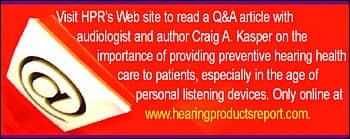
Anesko says that while Westone has seen an increase in orders for hearing protection earpieces, he feels more can be done to promote hearing conservation.
“Hearing care professionals can easily get engrossed with the process of fitting hearing instruments,” he says. “Certainly dispensing hearing instruments is a large revenue generator and consumes much of the professional’s time, but we always recommend that they also consider how many of those hearing-impaired individuals had noise exposure as a contributing factor in their hearing loss. And how many are being educated and fitted with hearing protection in addition to hearing instruments?
“Many hearing care professionals are doing a good job of promoting hearing conservation, both in their offices and out in the community,” he says. “They believe, as we do, that in providing complete hearing services to the public, they must do more than evaluate hearing levels and fit hearing instruments. This involves educating the public via seminars, newsletters, articles, and interviews. We saw a surge in public awareness of hearing conservation recently as iPods and similar devices made headlines as possibly leading to noise-induced hearing loss. Hearing care professionals responded with calls for device sound-output limiters and more responsible listening habits.”
With an estimated one third of the cases of hearing loss experienced by 28 million Americans being attributed to noise exposure, Santucci says hearing health care professionals are not doing nearly enough to educate the public. “The use of portable audio devices like personal stereos and cell phones combined with an already noisy world may increase that number in years to come,” he says.
Morgan Saffari is a contributing writer for Hearing Products Report. For more information, contact [email protected]


